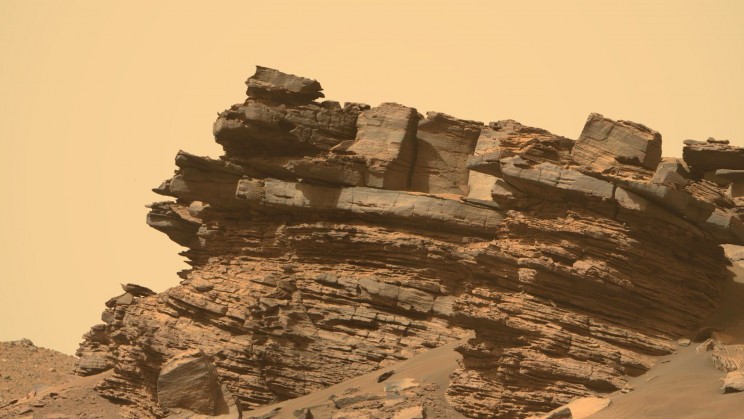Not so long ago, mankind had no knowledge of what life was like on Mars' surface. But now that NASA's Perseverance rover has sensors on board, we have been provided with a clear view of the Red Planet's landscape!
Paul Byrne, an associate professor of planetary geology at North Carolina State University, has discovered some especially stunning photographs in the collection of unprocessed rover images that NASA made public.
The agency has provided roughly 300,000 images from the mission, including this stunning Martian landscape image.

Exploring The Jezero Crater
Perseverance has spent the majority of its time on Mars, which is equivalent to more than 500 Martian days, or "sols," exploring a portion of the well-known Jezero Crater. The low-lying plain may have originally been a river delta covered in fresh water, according to scientists.
River channels burst over the crater wall and formed a lake more than 3.5 billion years ago. According to NASA, scientists have discovered evidence that water transported clay materials from the local area into the crater lake.
Microorganisms might have originally inhabited the area. If that's the case, NASA believes sediments from the coastline or lakebed may include indications of their remains.
Layers of sedimentary rock can be seen from Perserverence's vantage point in the Jezero crater in this fascinating photo that Byrne provided, reported first by Interesting Engineering.
However, the picture offers more than simply a breathtaking view of the Martian landscape. Geologists can use it to make fairly precise inferences by gauging the depth of the layers in the pictures and examining the rock's physical characteristics.
Read also : 'Largest Canyon in The Solar System:' ESA's Mars Express Snaps Stunning Views of Mars's Grand Canyon
All About Perseverance
Since it touched down on Mars in February of last year, Perseverance, a robot about the size of a car, has been exploring the planet's surface.
The primary task of the rover is to look for evidence of prehistoric microbial life, which it accomplishes with the aid of a drill that it uses to take samples of rock and dirt. In the future, NASA intends to send another mission to gather those samples.
The rover also gathers a ton of digital data, which it sends back to researchers on Earth. Spectrometers, a radar that can probe the planet's rocky surface, a weather station, and a camera named Mastcam-Z are just a few of the devices that provide this data.
Similar to the cameras aboard the Mars Exploration Rover, which started sending pictures of the surrounding area almost 20 years ago, this equipment has two cameras installed side by side. According to the agency, their color fidelity is comparable to consumer digital cameras.
Related Article : [PHOTO] NASA's HiRISE Camera Captures Mars' Weird Honeycomb Pattern Made of CO2 and Water Ice
This article is owned by Tech Times
Written by Joaquin Victor Tacla
ⓒ 2025 TECHTIMES.com All rights reserved. Do not reproduce without permission.




